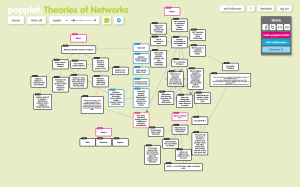For this week’s MindMap up date, I decided to focus in on what seems to be the theme of my MindMap so far: exploring the connection or disconnections between author, audience, and meaning. I began focusing on this because of the Biesecker article. The complexity of the rhetorical situation and Biesecker’s presentation of the situation as interactive, shifting, and dynamic made me think of the interactive and dynamic nature of discourse that Foucault emphasizes in Archaeology of Knowledge. For me, Biesecker and Foucault both emphasize: nonlinearity, interactivity, discontinuity, and finding meaning in difference.
The focus on looking in the “difference zone” and discourse being created where relationships connect and touch lead me to reflect on how Snap Chat resides in this nonlinear, ephemeral, place of difference. The application seeks to disrupt the traditional way that people communicate and interact with one another. The creators pride themselves on the idea that they are disrupting the current ways that people engage. Snap Chat presents the idea that they are changing the way that “we,” author’s of the “snaps,” interact with the audience (receivers of the snaps).
I am not quite sure how this connects to the idea of difference, but I sense that something is there that needs to be explored. I know that the emphasis being placed on ephemerality, friendship, and authenticity is intriguing. The idea that “snaps” disappear is intriguing. Are they making a promise that they cannot keep? How does snap chat’s perception of social networks/connections disrupt or change the idea of a network?

